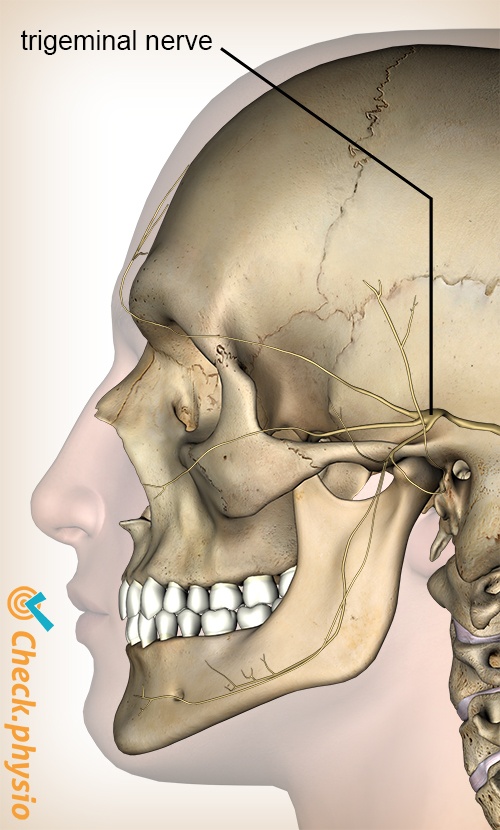- Conditions
- Cervicogenic headache
Cervicogenic headache CGH
Introduction
Cervicogenic headache (CGH) is a rare form of headache. The symptoms develop from the neck. In general, there is nothing wrong with the head itself.
Other forms of headache include migraine, tension headache, medication-induced headache and cluster headache.

Description of condition
The trigeminal nerve is a cranial nerve that innervates a large part of the face. If a problem with the trigeminal nerve develops in the neck, this may result in pain in the area innervated by the nerve.
Cause and history
It is suspected that the trigeminal nerve becomes over-stimulated in the neck.
Signs & symptoms
The headache is present continuously. There is also pain in the neck or arm on the same side as the headache is located. Movements of the neck may be restricted.
Diagnosis
The diagnosis of cervicogenic headache is based on the patient's history. Additionally, there are special headache questionnaires, and a headache diary may be requested to gain more insight into the complaints.
During the physical examination, the mobility of the neck is examined, and it is assessed whether the complaints are related.
If you have any doubts or experience severe headache complaints, always contact your general practitioner or specialist.
Treatment and recovery
Treatment consists of improving the mobility of the neck, postural corrections and an exercise program with muscle strengthening exercises. Only the combination of these three factors appears to be effective.
Exercises
Take a look at the online exercise program here with exercises for cervicogenic headaches that focuses on mobility, posture and strengthening neck muscles.
More info
You can check your symptoms using the online physiotherapy check or make an appointment with a physiotherapy practice in your locality.
References
Nugteren, K. van & Winkel, D. (2012) Onderzoek en behandeling van de nek Houten: Bohn Stafleu van Loghum.

